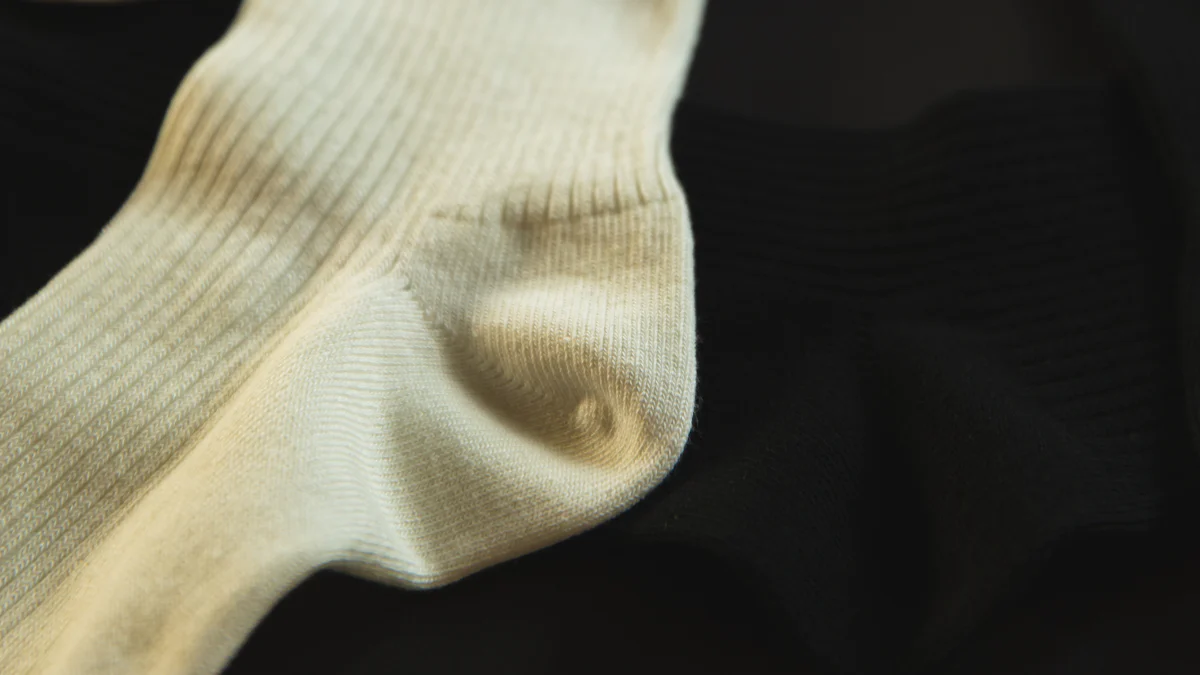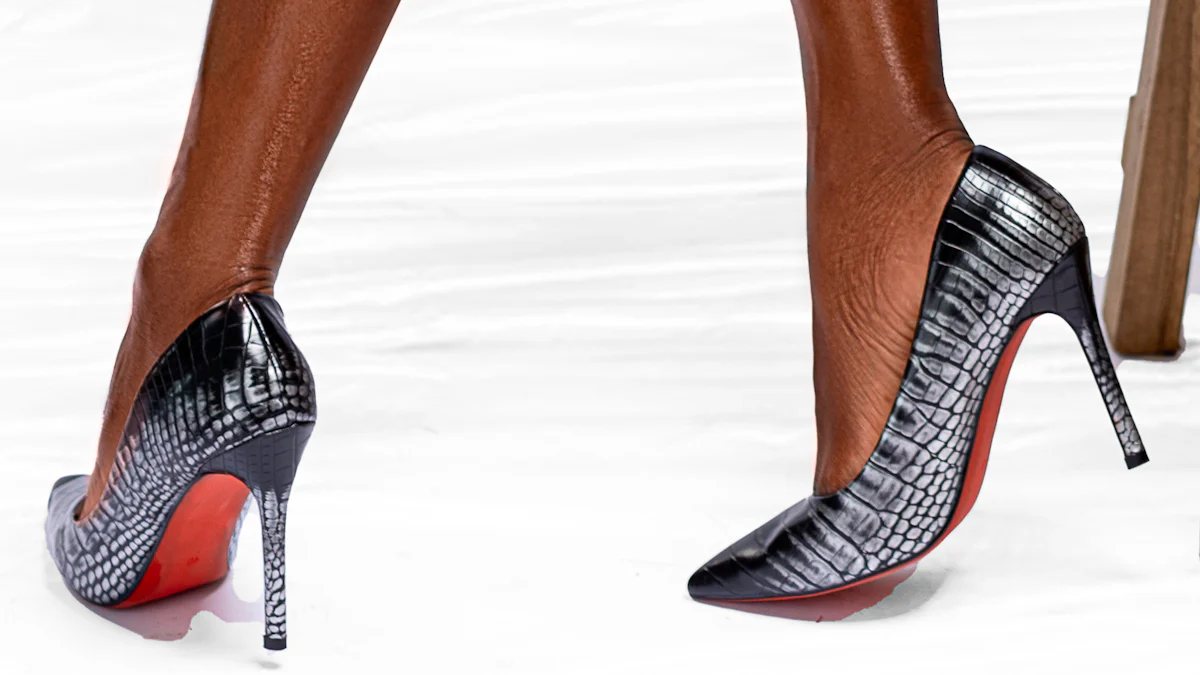
Kate Chopin, a prominent American author, gained recognition for her exploration of women’s roles in society. Her works often reflect the psychological effects of societal changes in the post-Civil War era. A Pair of Silk Stockings essay stands out as a notable work that delves into themes of consumerism and self-indulgence. The story portrays Mrs. Sommers’ internal conflict between personal desires and social responsibilities. Analyzing these themes provides valuable insights into the societal dynamics of Chopin’s time.
Major Themes in ‘A Pair of Silk Stockings’

The Theme of Self-Indulgence
Mrs. Sommers’ Unexpected Windfall
Mrs. Sommers finds herself with an unexpected windfall of fifteen dollars. This small fortune represents a significant amount for her. The money offers a rare opportunity to indulge in personal desires. Mrs. Sommers initially plans to spend the money on practical items for her children. However, the allure of self-indulgence soon takes over.
The Shopping Spree
The shopping spree begins with the purchase of a pair of silk stockings. The luxurious feel of the stockings captivates Mrs. Sommers. She then proceeds to buy other items, including gloves, boots, and a meal at a fancy restaurant. Each purchase represents a step further into self-indulgence. The act of shopping provides a temporary escape from her daily struggles.
The Temporary Escape from Reality
The shopping spree allows Mrs. Sommers to momentarily escape her reality. The new purchases make her feel like a different person. The silk stockings, in particular, symbolize a break from her mundane existence. This temporary escape highlights the theme of self-indulgence. The story emphasizes how fleeting moments of pleasure can provide relief from life’s hardships.
The Theme of Socioeconomic Struggles
Mrs. Sommers’ Financial Constraints
Mrs. Sommers lives under constant financial constraints. Her life revolves around making ends meet for her family. The fifteen dollars offer a brief respite from her economic struggles. This windfall underscores the harsh realities of her financial situation. The story portrays the difficulties faced by those living in poverty.
The Contrast Between Wealth and Poverty
The contrast between wealth and poverty becomes evident during Mrs. Sommers’ shopping spree. The luxurious items she buys stand in stark contrast to her usual frugality. The department store, the restaurant, and the theater represent spaces of affluence. These settings highlight the divide between Mrs. Sommers’ world and that of the wealthy.
The Impact on Mrs. Sommers’ Psyche
The experience of temporary affluence impacts Mrs. Sommers’ psyche. The indulgence brings a sense of joy and freedom. However, it also serves as a reminder of her usual deprivation. The story explores how socioeconomic struggles affect one’s mental state. Mrs. Sommers’ brief encounter with luxury leaves a lasting impression on her.
The Theme of Gender Roles
Mrs. Sommers’ Role as a Mother
Mrs. Sommers’ role as a mother dominates her life. Her initial intention to spend the money on her children reflects societal expectations. The story highlights the sacrifices mothers make for their families. Mrs. Sommers’ actions reveal the pressures placed on women to prioritize their families over themselves.
Societal Expectations of Women
Societal expectations of women play a significant role in the story. Women are expected to be selfless and nurturing. Mrs. Sommers’ decision to indulge in personal desires challenges these norms. The story critiques the rigid gender roles imposed on women. It suggests that women deserve moments of self-care and independence.
The Moment of Personal Freedom
The moment of personal freedom Mrs. Sommers experiences is fleeting but profound. The silk stockings symbolize this freedom. The story suggests that such moments are rare for women in her position. Mrs. Sommers’ brief escape from her responsibilities highlights the need for balance between self-sacrifice and self-indulgence.
Character Analysis
Mrs. Sommers
Her Background and Circumstances
Mrs. Sommers lives a life marked by financial hardship. The story hints at a past where she experienced better economic conditions. The sudden windfall of fifteen dollars brings back memories of those times. Mrs. Sommers’ current circumstances force her to prioritize her family’s needs over her own desires.
Her Internal Conflict
Mrs. Sommers faces a significant internal conflict throughout the story. The unexpected money presents a dilemma. Should she spend it on her children or indulge herself? This conflict highlights her struggle between personal desires and societal expectations. The story portrays her as a character torn between duty and self-indulgence.
Her Transformation Throughout the Story
Mrs. Sommers undergoes a noticeable transformation during the story. At first, she plans to use the money for practical purposes. However, the allure of luxury items changes her course. Each purchase represents a step towards reclaiming a sense of self. By the end of the story, Mrs. Sommers experiences a brief but profound sense of freedom.
Minor Characters
The Salespeople
The salespeople in the story play a crucial role. They represent the world of consumerism that entices Mrs. Sommers. Their courteous and attentive behavior contrasts with her usual experiences. The salespeople’s actions highlight the temporary nature of her escape into luxury.
The Other Shoppers
The other shoppers serve as a backdrop to Mrs. Sommers’ experience. They embody the affluence that she momentarily enjoys. Their presence emphasizes the contrast between her usual life and the world of wealth. The other shoppers’ indifference underscores her isolation in this brief indulgence.
Their Role in Highlighting Mrs. Sommers’ Experience
The minor characters collectively enhance the story’s themes. The salespeople and other shoppers highlight Mrs. Sommers’ internal conflict and transformation. Their interactions with her underscore the fleeting nature of her escape. These characters help to emphasize the story’s exploration of consumerism and personal desire.
Setting and Its Significance

The Urban Environment
The Department Store
The department store serves as a central location in the story. The store symbolizes consumerism and the allure of luxury. Mrs. Sommers enters the store with practical intentions. The sight of silk stockings changes her plans. The store’s opulence contrasts with her usual surroundings. The experience in the store marks the beginning of her indulgence.
The Restaurant
The restaurant represents another step into luxury for Mrs. Sommers. The meal she enjoys is a rare treat. The restaurant’s ambiance provides a sense of sophistication. Mrs. Sommers feels a temporary escape from her daily struggles. The experience at the restaurant highlights the theme of self-indulgence.
The Theater
The theater offers the final escape in Mrs. Sommers’ journey. The performance captivates her and provides a sense of freedom. The theater’s grandeur contrasts with her ordinary life. The experience at the theater symbolizes a brief respite from reality. The setting emphasizes the fleeting nature of her indulgence.
The Temporal Setting
The Late 19th Century Context
The story takes place in the late 19th century. This period reflects significant social and economic changes. Industrialization and urbanization shape the societal landscape. Kate Chopin draws upon her experiences in the southern United States. The story explores themes of class, race, and gender during this time.
The Influence of Time on the Story’s Themes
The late 19th century context influences the story’s themes. The era’s social expectations impact Mrs. Sommers’ actions. The story critiques the rigid gender roles of the time. The economic struggles reflect the challenges faced by many during this period. The setting underscores the tension between personal desires and societal responsibilities.
Literary Devices in ‘A Pair of Silk Stockings’
Symbolism
The Silk Stockings
The silk stockings symbolize Mrs. Sommers’ repressed desires. These desires include beauty, belonging, and escape from her mundane existence. The luxurious feel of the stockings captivates her. This symbolizes a break from her daily struggles. The stockings represent a moment of self-indulgence.
The Money
The fifteen dollars symbolize opportunity and temptation. Mrs. Sommers initially plans to use the money for practical purposes. However, the allure of luxury items changes her plans. The money represents a chance to experience a different life. This highlights the theme of socioeconomic struggles.
The Theater Tickets
The theater tickets symbolize a final escape from reality. The performance captivates Mrs. Sommers and provides a sense of freedom. The theater’s grandeur contrasts with her ordinary life. The tickets represent a brief respite from her responsibilities. This emphasizes the fleeting nature of her indulgence.
Imagery
Descriptions of the Stockings
The descriptions of the silk stockings create vivid imagery. The story details the stockings’ texture and appearance. This imagery highlights the allure of luxury. The stockings’ softness and sheen captivate Mrs. Sommers. This sensory detail emphasizes her desire for self-indulgence.
The Sensory Experience of Shopping
The story uses imagery to describe the sensory experience of shopping. The sights, sounds, and smells of the department store come to life. This creates an immersive experience for the reader. The sensory details highlight the allure of consumerism. The shopping spree becomes a temporary escape for Mrs. Sommers.
The Contrast Between Different Social Classes
Imagery plays a crucial role in highlighting the contrast between social classes. The luxurious items Mrs. Sommers buys stand in stark contrast to her usual frugality. The opulence of the department store, restaurant, and theater contrasts with her ordinary life. This imagery underscores the divide between wealth and poverty.
Irony
Mrs. Sommers’ Initial Intentions vs. Her Actions
Irony emerges in Mrs. Sommers’ initial intentions versus her actions. She plans to spend the money on practical items for her children. However, she ends up indulging in luxury items for herself. This irony highlights her internal conflict. The story critiques societal expectations placed on women.
The Temporary Nature of Her Escape
The temporary nature of Mrs. Sommers’ escape creates irony. Her indulgence provides a brief respite from her daily struggles. However, the escape is short-lived. The story emphasizes the fleeting nature of self-indulgence. This irony underscores the harsh realities of her life.
The Final Scene on the Cable Car
The final scene on the cable car contains irony. Mrs. Sommers returns to her reality after a day of indulgence. The cable car ride symbolizes her return to her ordinary life. The story ends with her longing for the fleeting moments of luxury. This irony highlights the tension between personal desires and societal responsibilities.
A Pair of Silk Stockings essay highlights the significant themes of self-indulgence, socioeconomic struggles, and gender roles. Mrs. Sommers’ character development showcases her internal conflict and transformation. The story remains relevant to contemporary readers by addressing the balance between personal desires and societal expectations. Kate Chopin’s work encourages readers to reflect on the importance of self-care and independence. Exploring more of Chopin’s works can provide deeper insights into the complexities of women’s lives in the late 19th century.

